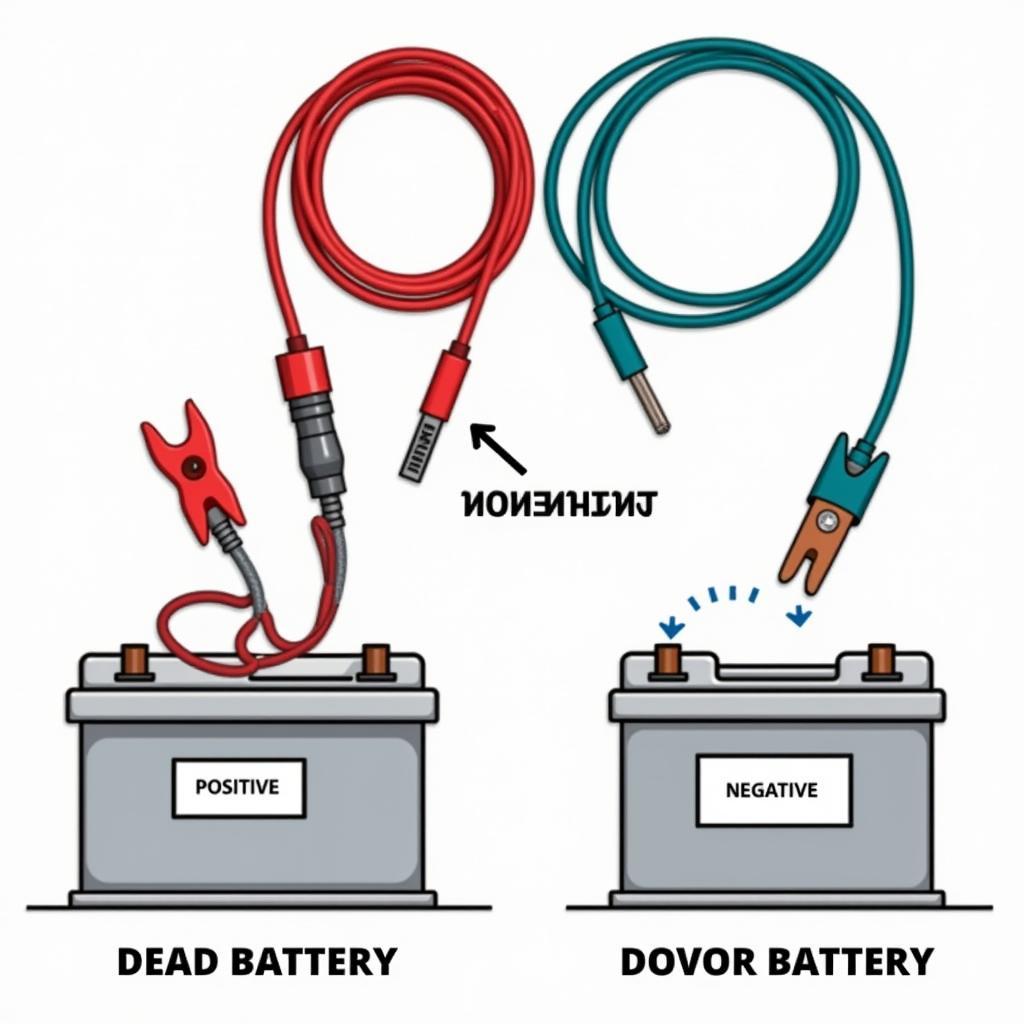A dead car battery can be a frustrating experience, leaving you stranded and delayed. Knowing how to jump start a dead battery is a crucial skill for any driver. This guide provides a step-by-step approach to jumping starting a dead battery safely and effectively, along with essential tips and troubleshooting advice.
Understanding the Basics of Jump Starting
Before we dive into the process, it’s helpful to understand why batteries die and how jump starting works. Batteries lose their charge over time, especially in extreme temperatures. Leaving lights on, a faulty alternator, or simply an old battery can also lead to a dead battery. Jump starting involves using a working battery from another vehicle to provide a temporary charge to your dead battery, allowing your car to start.
Why is My Car Battery Dead?
Several factors can contribute to a dead car battery, including:
- Age: Batteries have a limited lifespan, typically 3-5 years.
- Extreme Temperatures: Both hot and cold weather can affect battery performance.
- Parasitic Drain: Electronic components drawing power even when the car is off.
- Failing Alternator: The alternator recharges the battery while the engine is running. A faulty alternator prevents this from happening.
- Human Error: Leaving lights, radio, or accessories on can drain the battery.
Gathering Your Supplies for a Jump Start
Before you begin the jump start process, gather the necessary equipment:
- Jumper Cables: Ensure you have a good set of jumper cables with heavy-gauge wiring and strong clamps.
- Donor Vehicle: A vehicle with a working battery is essential. Make sure the donor vehicle’s battery has the same voltage as yours (typically 12 volts).
- Safety Glasses (Recommended): Protecting your eyes from potential sparks or battery acid is crucial.
- Gloves (Recommended): Wearing gloves provides an extra layer of protection.
Step-by-Step Jump Starting Procedure
Follow these steps to jump start your dead battery safely:
- Position the Vehicles: Park the donor vehicle close to your car, ensuring the batteries are accessible and the vehicles don’t touch.
- Turn Off Both Vehicles: Ensure all accessories, lights, and electronics are turned off in both vehicles.
- Attach the Red (Positive) Cable: Connect one end of the red cable to the positive (+) terminal of the dead battery. Then connect the other end of the red cable to the positive (+) terminal of the donor battery.
- Attach the Black (Negative) Cable: Connect one end of the black cable to the negative (-) terminal of the donor battery. Connect the other end of the black cable to a clean, unpainted metal surface on the dead car’s engine block, away from the battery.
- Start the Donor Vehicle: Let the donor vehicle run for a few minutes to charge the dead battery.
- Start Your Vehicle: Attempt to start your car. If it doesn’t start immediately, wait a few more minutes and try again.
- Remove the Cables: Once your car starts, remove the cables in the reverse order: black cable from your car, black cable from the donor vehicle, red cable from the donor vehicle, and finally, red cable from your car.
- Let Your Car Run: Allow your car to run for at least 30 minutes to recharge the battery.
What if My Car Still Won’t Start After a Jump?
If your car still doesn’t start, there might be a more serious problem, such as a faulty starter, alternator, or a completely dead battery beyond jump starting. It’s best to consult a qualified mechanic.
“A common mistake is improper cable connection,” says automotive electrical expert, David Miller. “Double-check that the cables are securely attached to the correct terminals and a good ground.”
 Connecting Jumper Cables Correctly
Connecting Jumper Cables Correctly
Preventing Future Dead Batteries
Regular battery maintenance can help prevent future dead batteries. Here are a few tips:
- Regular Battery Testing: Have your battery tested regularly, especially during extreme weather conditions.
- Clean Battery Terminals: Corrosion can interfere with the battery’s performance. Clean the terminals with a wire brush and baking soda solution.
- Limit Short Trips: Short trips don’t give the alternator enough time to fully recharge the battery.
- Turn Off Accessories: Make sure all lights, radio, and accessories are off when the car is parked.
“Preventive maintenance is key,” adds Miller. “Regularly checking your battery and charging system can save you from the hassle of a dead battery down the road.”
Conclusion
Jumping starting a dead battery is a valuable skill every driver should possess. By following the correct procedure and taking preventive measures, you can confidently handle this common car trouble and get back on the road. Remember to prioritize safety and consult a professional if you encounter any difficulties.
FAQ
- How long can I leave jumper cables connected? It’s best not to leave them connected for more than a few minutes once the dead car has started.
- Can I jump start a car with a different voltage battery? No, using a different voltage battery can damage both vehicles’ electrical systems.
- Is it safe to jump start a car in the rain? Yes, as long as you follow safety precautions and avoid touching any wet metal parts.
- What if the jumper cables get hot? This could indicate a problem with the cables or the charging system. Disconnect the cables immediately and consult a mechanic.
- How often should I replace my car battery? Most car batteries last 3-5 years. It’s best to replace them before they completely fail.
- Can I jump start my car from a wall outlet? Yes, with a dedicated battery charger, but follow the manufacturer’s instructions carefully.
- Why is it important to connect the negative cable to the engine block and not the battery? Connecting to the engine block provides a better ground and reduces the risk of sparks near the battery, which contains hydrogen gas that can ignite.

